Archive for 2014
The private I? Me and my home
17 June 2014 | Reviews
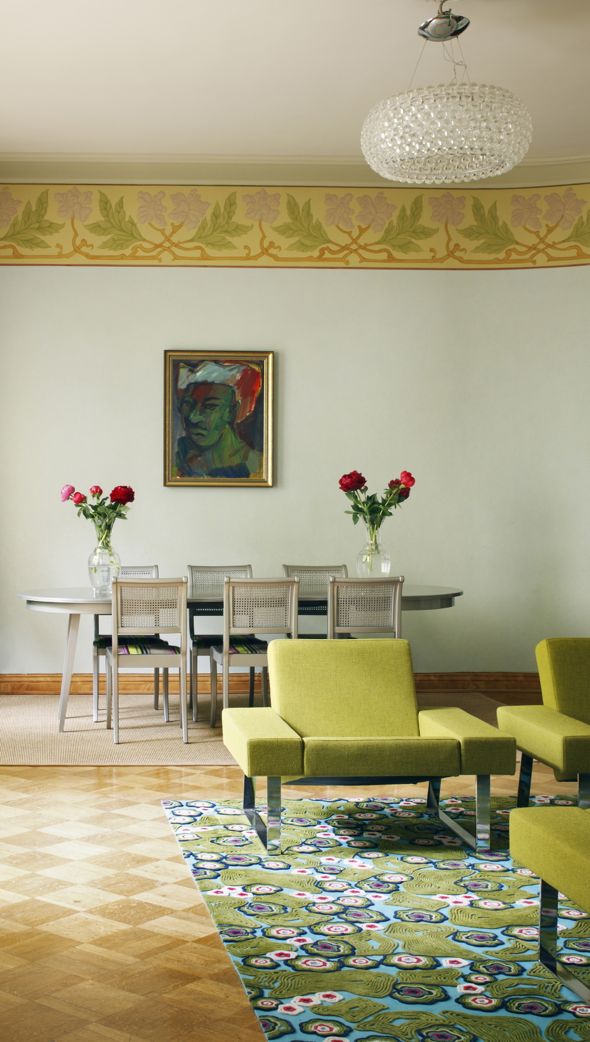
Art Nouveau with a modern twist. Photo: Avaimia ajattomiin suomalaisiin sisustuksiin / Jaanis Kerkis
Avaimia ajattomiin suomalaisiin sisustuksiin
[Keys to timeless Finnish interiors]
Design: Hanni Koroma, text: Sami Sykkö, photographs: Jaanis Kerkis
Helsinki: Gummerus, 2014. 123 pp., ill.
ISBN 978-951-20-9507-0
€32.90, hardback
Katja Lindroos
MOMO. Koti elementissään
[MOMO. The home in its element]
Photography: Riikka Kantinkoski, Niclas Warius
Helsinki: Siltala, 2013. 154 pp., ill.
ISBN 978-952-234-164-8
€32.90, hardback
www.momokoti.fi (in Finnish only)
‘Interior decoration’ has become an extremely popular pastime in Finland – as elsewhere where the standard of living allows it.
Innumerable magazines and blogs keep churning out photos of rooms with large white, cushioned sofas, glossy white kitchen cabinets and white floors on which furniture seems to float forlornly. Walls are decorated with wooden or metallic letters forming words: love; home, sweet home. In the kitchen the bread bin bears the word BREAD. (Bookcases, with actual books, are rare.)
Why is it that in our age which worships ‘individuality’, trends rule? More…
Hip hip hurray!
13 June 2014 | This 'n' that
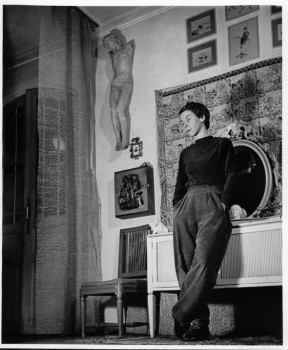
Tove Jansson, 1956. Photo: @Moomin Characters™
The English author of bestselling children’s fantasy books Philip Pullman – of His Dark Materials fame – declares himself a devoted fan of Tove Jansson, the Finnish Moomin-creator and artist, whose stories and novels have been translated into 44 languages.
Pullman has been a fan since the age of eight – now, reassessing Jansson’s work, he notes ‘the perfection of the drawings’. Jansson illustrated her Moomin books, in black-and-white mostly.
Pullman reviews two books in Books for Keeps, the British online children’s book magazine: the newly translated biography of Tove Jansson (1914–2001) by the Swedish scholar Boel Westin (Tove Jansson: Life, Art, Words, Sort of Books, 2014) and Tove Jansson’s memoir from her childhood, Sculptor’s Daughter. ‘Jansson responded to the world with a freshness and originality that have hardly ever been matched in the field of children’s books,’ he writes.
The artist, painter, writer Tove Jansson was born on 9 August – almost a hundred years ago. A major centenary exhibition of her work at the Finnish National Gallery Ateneum is open until 7 September.
Pullman concludes: ‘she could convey all the excitement of wonder as well as the reassurance of comfort and familial love – and [–] evoke a mood of apprehension, loss and mystery. She should have had the Nobel Prize.’
Three cheers – we at Books from Finland agree!
Sata sosiaalista innovaatiota Suomesta [100 innovations from Finland]
5 June 2014 | Mini reviews, Reviews
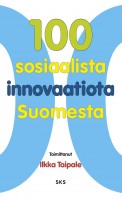 Sata sosiaalista innovaatiota Suomesta
Sata sosiaalista innovaatiota Suomesta
[100 innovations from Finland]
Toim. [Ed. by] Ilkka Taipale
Helsinki: Finnish Literature Society, 2013. [Second, revised edition] 332 pp .
ISBN 978-952-222-466-8
€10, paperback
English edition:
100 Social Innovations from Finland
ISBN 978-952-222-463-7
€10, paperback
In this book edited by the physician and social activist Ilkka Taipale, dozens of experts discuss Finnish social innovations. The book is a revised version of the volume that first appeared in 2006 and has already been translated into 17 languages. Readers may have their own ideas about whether all the innovations originated in Finland – nevertheless, they are distinctively Finnish in their application. They are dealt with in the following groups: administration, social policy, health, culture, international context, civil society, social technology and everyday amusements. A wide range of topics is covered, including the Sámi issue, the unicameral parliament, the maternity package, free education, text messaging and Nordic Walking [walking with the poles for exercise]. Some of the innovations, like the sauna, Nordic Walking, the board game ‘Star of Africa’ and the free computer operating system Linux, are well known outside Finland, while others are only to be found there. The viewpoints presented in the essays vary, but the book provides a thought-provoking overview of Finnish creativity.
Translated by David McDuff
Animal magic
3 June 2014 | Extracts, Non-fiction
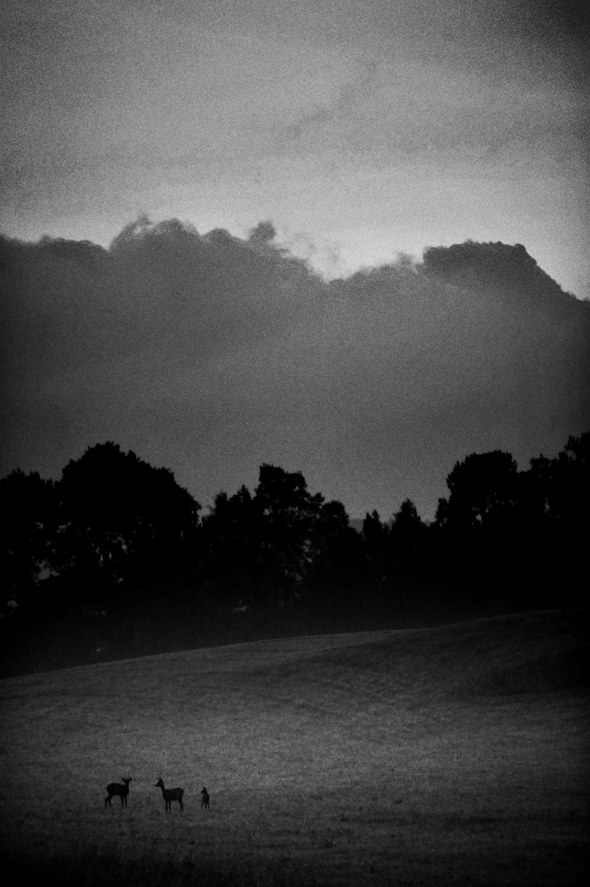
Roe deer, Sweden. Photo: Mats Andersson
A day in the life of an elk, of a lynx? Nature photographers venture into the depths of forests, in pursuit of the inhabitants – predator and prey, mythical and real. Photographs from Kohtaamisia (‘Encounters’), by Mats Andersson and Heikki Willamo, text by Willamo (Maahenki & Musta Taide [Black Art], 2014)
The feelings in our dreams. They well from depths – from those layers of awareness that the mind does not shackle. In sleep we handle and organise the events of our lives in a way which is impossible when awake, when we are conscious of ourselves and our limitations. That is why animals can come into my dreams as friends, equal partners, like me, and therefore I so often dream of having their abilities and skills.
When awake we think all the time. We think about past events and worry about the future or dream of something better. Very seldom do we live in the moment. Photographs are passing moments, often only a thousandth of a second long, but sometimes lasting minutes or even hours. In finished photographs the beholder can see much more – he adds his memories or dreams of the future. The picture-taking moment vanishes, something else comes in its stead. More…
Another morning, another day
Poems from Unen kaivo (‘The well of dreams’, WSOY, 1936). Introduction by Satu Grünthal
IN THE MIRROR
Strange and truly wondrous
in the mirror you look at me.
All I really know is
that you I cannot be.
With my eyes you survey me,
with my lips you smile, too,
what I see in the mirror
is not me, but you, just you.
Whoever you are – astral morning,
eternal night – in the frame
like a wraith, a ghostly phantom,
invisible I remain. More…
Liisa Suvikumpu: Suomalaiset kylpylät. Kotimaisen kylpyläkulttuurin historiaa [Finnish spas. The history of Finnish spa culture]
28 May 2014 | Mini reviews, Reviews
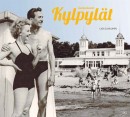 Suomalaiset kylpylät. Kotimaisen kylpyläkulttuurin historiaa
Suomalaiset kylpylät. Kotimaisen kylpyläkulttuurin historiaa
[Finnish spas. The history of Finnish spa culture]
Helsinki: Finnish Literature Society, 2013. 240 pp., ill.
ISBN 978-952-222-239-8
€45, hardback
The Finnish sauna fulfils some of the same functions as the spa, but the latter is more public. In Finland there have been various kinds of spas that employ the health-giving effects of water, and they have mostly been based on European models. The historian Liisa Suvikumpu presents the story of some twenty Finnish spas from a cultural-historical perspective. Their heyday lasted from the nineteenth century to World War II. At these establishments it was possible to enjoy the benefits of bathing and mineral water: they were accompanied by relaxation therapy, rest, exercise and a healthy diet , but also entertainment and socialising. The spas in various parts of Finland were keenly patronised by Russian visitors before the Russian Revolution of 1917. Some of Finland’s most renowned architects designed the buildings, and the premises often included pavilions, kiosks, a restaurant and a park. With its lively text and versatile illustrations this book would make also an excellent present.
Translated by David McDuff
Now and then
22 May 2014 | This 'n' that
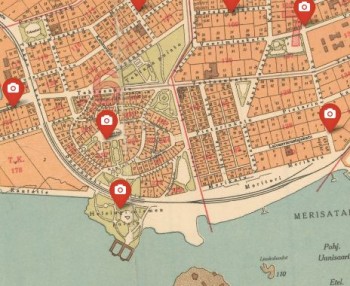 Karttalehtinen, a company that specialises in making orienteering maps, has posted 133 photographs of Helsinki from 1907–1912, by Signe Brander, the pioneering city photographer, together with contemporary Google street shots, on this zoomable site.
Karttalehtinen, a company that specialises in making orienteering maps, has posted 133 photographs of Helsinki from 1907–1912, by Signe Brander, the pioneering city photographer, together with contemporary Google street shots, on this zoomable site.
Click ‘Google street view’ (Google Maps) down left, for a bigger view. (Kuvan tiedot gives details of Brander’s photo, in Finnish only.) The old photos are from the Helsinki City Museum archives.
Brander (1869–1942) was hired by Helsinki City Council’s Board of Antiquities to record the fast-growing city for almost seven years between 1907 and 1913.
The southernmost photo on the map shows the barren Ursin rocks on the seashore, with Hernesaari (‘Pea island’) in the background. Today, as the Google shot shows, there is a park and a monument for seafarers, particularly those who lost their lives at sea.
Helsinki life and buildings as they existed a hundred years ago are portrayed in these calm shots of a small town going about its business. Signe did a very good job in her capacity as official photographer.
Thirsty for poetry
22 May 2014 | This 'n' that
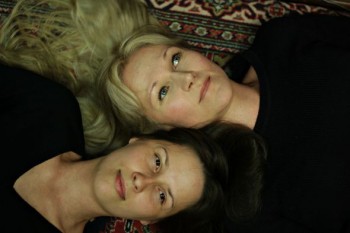
Johanna Venho (above) and Vilja-Tuulia Huotarinen. Photo:
Jano (‘Thirst’) is the name for a new online magazine: according to the writers and poets Johanna Venho and Vilja-Tuulia Huotarinen, its editors, it is a ‘poetry journal for all’ – for poets, the general public, for anybody.
Two issues have been published since November 2013. The theme of the first one is Time, of the second, Place.There are interviews, autobiographical texts, texts by critics and poets. More…
Journalist 3.0
22 May 2014 | Non-fiction, Tales of a journalist
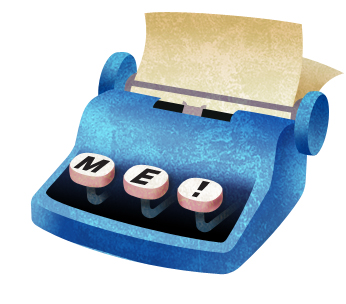
Illustration: Joonas Väänänen
As the world becomes more and more difficult to understand, the media, strapped for cash and forced for reduce expenses, sack their expert writers. Jyrki Lehtola assesses the new breed of cut-price journalists
Some time in the distant past it was possible for a reader to reflect that here was an educated journalist writing pithily. It would be nice to know more of his or her thoughts.
There used to be talk of such concepts as the ‘objective truth’, and editors shunned talking about themselves, or even speaking or writing in the first person. There was just the world, which the journalist, the conduit of truth, conveyed to the public.
Now, although most of us would prefer to know nothing about journalists and their private lives, journalists have brought their lives strongly into the public arena. Objectivity is dead; there are merely millions of subjects who perhaps share the same experiences, perhaps not, and, misled by some idealised concept of community, we are the beneficiaries of journalists writing about what it’s like to be a mum, how challenging life as a mother and journalist can be. More…
Tellervo Krogerus: Sanottu. Tehty. Matti Kuusen elämä 1914–1998. [Said. Done. The life of Matti Kuusi, 1914–1998]
22 May 2014 | Mini reviews, Reviews
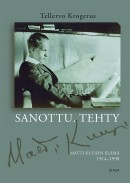 Sanottu. Tehty. Matti Kuusen elämä 1914–1998
Sanottu. Tehty. Matti Kuusen elämä 1914–1998
[Said. Done. The life of Matti Kuusi, 1914–1998]
Helsinki: Siltala , 2014. 856 pp., ill .
ISBN 978-952-234-194-5
€31.50, hardback
The folklorist Matti Kuusi vied for the status of the world’s leading researcher of proverbs with the Californian scholar Archer Taylor, his work extending from the shores of the Baltic Sea to Namibia’s Ovamboland. Proverbs revealed to him the deep structures of the human mind and showed that the nations of the world possessed a basis for mutual understanding. As a young man Kuusi read Spengler and predicted the destruction of the Western world. According to his ‘Kalevalan imperialism’, the Nordic region was to be the new world power. The war brought him to his senses: he understood that patriotism was mainly a matter of bland resilience. Professor Kuusi was a rigorous scholar, but also a provocative man of ideas who showed that pop music was today’s folk poetry. That idea received a mixed reception, but nowadays his department studies both rap music and ancient folk song. This biography by Tellervo Krogerus creates a rich portrait of a complex personality.
Translated by David McDuff
Beautiful books
15 May 2014 | Letter from the Editors, Non-fiction
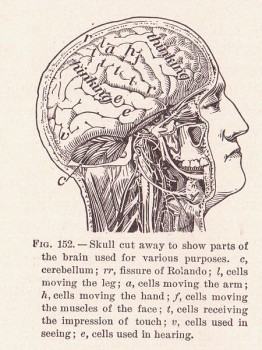
Brains at work. (Alvin Davison, ‘The Human Body and Health’, 1908) Wikimedia
A precise translation of the word non-fiction doesn’t exist in the Finnish language. Fiction is kaunokirjallisuus (a word invented by two diligent scholars, D.E.D. Europaeus and A. Varelius in mid-19th century for their Swedish-Finnish dictionary) – and a pretty word it is: kauno- is derived from the word kaunis, beautiful, beauteous. Non-fiction translates as tietokirjallisuus: literally, ‘literature of knowledge’.
Recently the status of Finnish non-fiction has been discussed in various media. Authors of non-fiction, as well as a number of readers, have been worried about diminishing sales, a decline in interest among both the general public and publishers, a lack of professional publishers’ editors. In a small-language area producing and profitable publishing ‘literature of knowledge’ is financially hard. More…
Kynällä kyntäjät. Kansan kirjallistuminen 1800-luvun Suomessa [Ploughers with a pen. The development of literacy in nineteenth-century Finland]
15 May 2014 | Mini reviews, Reviews
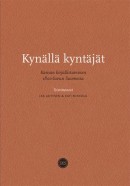 Kynällä kyntäjät. Kansan kirjallistuminen 1800-luvun Suomessa
Kynällä kyntäjät. Kansan kirjallistuminen 1800-luvun Suomessa
[Ploughers with a pen. The development of literacy in nineteenth-century Finland]
Toimittajat [Editors]: Lea Laitinen & Kati Mikkola
Helsinki: Finnish Literature Society, 2013. 558 pp., ill.
ISBN 978-952-222-453-8
€42, paperback
This multidisciplinary work by thirteen researchers discusses the writings of self-taught people in the 19th century. In their own communities these Finnish-language amateur authors were exceptions to the norm, but viewed in the context of the Finnish nation as a whole there were more of them than there were authors belonging to the educated classes. The principal aim is to examine how the common people saw the social and cultural phenomena which the educated classes saw from their own perspective. Kynällä kyntäjät provides a background to the research of the subject and the spread of writing ability, presenting diaries, biographies, letters, rural poetry published in newspapers, broadside ballads, plays, short stories, collections of folklore and handwritten journals, as well as focusing on the mental and linguistic changes related to the development of literacy. The book opens up a new and fascinating perspective on the 19th-century world of ideas.
Translated by David McDuff
Updated, alive
8 May 2014 | Non-fiction, Reviews
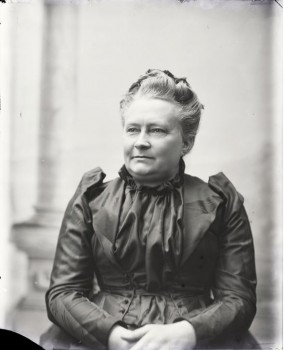
Minna at 50. The Finnish flag is flown on her birthday: 19 March has been named the Day of Equality. Canth also flies on the tail of one of the aircrafts of the Nordic airline Norwegian: the fleet carries portraits of ‘heroes’ and ‘heroines’ of four Nordic countries (the other Finn is the 19th-century poet J.L. Runeberg). Original photo: Viktor Barsokevich / Kuopio Museum of Cultural History
Herkkä, hellä, hehkuvainen – Minna Canth
[Sensitive, gentle, radiant – Minna Canth]
Helsinki: Otava, 2014. 429 pp., ill.
ISBN 978-951-1-23656-6
€40.20, hardback
There are two sure methods of preserving the freshness of the works of a classical author in a reading culture that is increasingly losing its vigour.
The first is to give a high profile to new interpretations of them, either in the form of scholarly lectures or of artistic re-workings, such as dramatisations, librettos or film scripts. Another unbeatable way to keep them alive as a subject of discussion is an updated biography, through which the author is seen with new eyes.
Minna Canth (1844–1897) is now celebrating her 170th anniversary, and she is fortunate in both respects. Having begun her literary career in the late nineteenth century, she still continues to be Finland’s most significant female writer.
Her influence on the role of women in society and, in particular, her promotion of girls’ education, is the cornerstone of Finland’s social equality. In the twenty-first century Canth’s plays are still receiving new interpretations, and they have also been made into operas and musicals. (Read her short story, ‘The nursemaid’, here.) More…
Still selling best
8 May 2014 | In the news
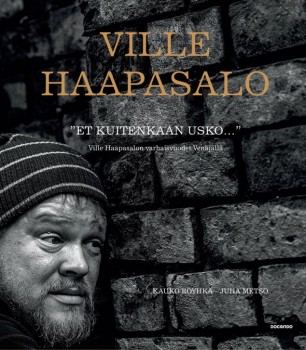
Celebrity in Russia: Ville Haapasalo on the cover of Et kuitenkaan usko… (’You won’t believe it anyway…’)
Not a lot of new titles made it to the list of the best-selling books – compiled by the Finnish Booksellers’ Association – in April, it seems. Number one on the Finnish fiction list was still Tommi Kinnunen’s first novel, Neljäntienristeys (‘The crossing of four roads’, WSOY).
In March this title reached the top after favourable reviews – in the Helsingin Sanomat daily paper in particular. The narrative spans a century beginning in the late 19th century and takes place in the Finnish countryside.
Number two – again – was another first novel about problems arising in a religious family, Taivaslaulu (‘Heaven song’, Gummerus, 2013) by Pauliina Rauhala. Number three was the latest crime/police novel by Seppo Jokinen, Mustat sydämet (‘Black hearts’, Crime Time).
On the translated fiction list, after George R.R. Martin’s A Dance with Dragons – top of the list in March too – is Donna Tartt’s The Goldfinch. Another donna (Donna Leon) was number three with her Beastly Things.
On the non-fiction list number one was a book on the Finnish actor / television journalist Ville Haapasalo’s life – and adventures during his travels in Russia, where he is a big celebrity and film star – by Haapasalo, Kauko Röyhkä and Juha Metso (Docendo). Number two was an autobiographical book by Katri Helena, a pop star who began her career in the 1960s.
The selection among the 20 best-selling books included, as usually, autobiographies and biographies, cookery, books about birds and nature. And Moomins. Books about Moomins and their creator Tove Jansson (1914–2001) certainly will rule this year – Jansson’s centenary.

